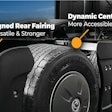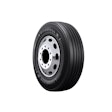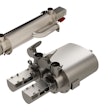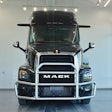Utility Trailer saw some challenges with large aerodynamic trailer tails that could be traced back to the drawing board.
“Aerodynamic companies are building these devices for trailers,” said Craig Bennett, Utility’s senior vice-president of marketing and sales. “These are small companies that saw an opportunity to build an aerodynamic device and they did but they don’t know how to make a trailer.”
Drivers, Bennett explained, were having difficulties with the large tails which he said would fall victim to loading docks.
“Many of those products, when they break, customers will take them off and throw them away,” Bennett said.
With that in mind, Utility Trailer set out to build a better aerodynamic tail in-house which Bennett says doesn’t interfere with drivers and produces “the same results aerodynamically which results in fuel savings and lower cost as those other devices which have more moving parts typically and are bigger, heavier and more expensive.”
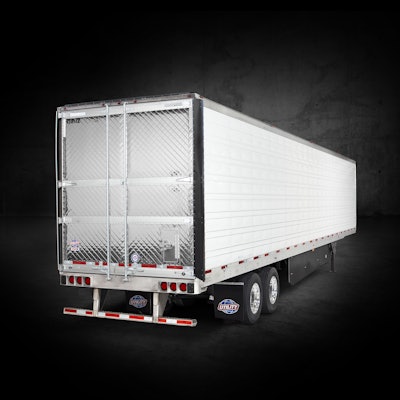 Utility 3000R Reefer with Utility Aerodynamic Tail
Utility 3000R Reefer with Utility Aerodynamic TailThe Utility Aerodynamic Tail has low profile which makes it somewhat hard to spot in a photo, but using the EPA’s GHG-2 aero test protocols, Utility reports that the tail produces a 2.7 percent fuel savings. Add the Utility Advanced Side Skirt and the savings rise to 3.7 percent.
“We’re trying to help the industry become more productive and to lower their cost. The price of fuel has been high. It’s not as high as it was but it will be high again, I predict,” Bennett said. “So we’ve created aero-dynamic devices ourselves rather than having third parties do it because that way we can design them and understand what the testing is—what the actual results are aerodynamically so we can be sure that the lifecycle of those products is tested so that we know the products are going to last as long as the trailer.”
Features of the Utility Aerodynamic Tail
- Comprised of two black side foils and one single black top foil assembly
• Constructed of a UV-Protected thermoplastic composite that promotes long-life
• Easy operation connected to the swing doors to automatically deploy and un-deploy when the doors are opened and closed
• Roof fairing is engineered to not interfere with lock rods or rear light areas
• Weighing only 25 lbs., it meets all DOT photometric requirements
• Streamlines airflow to diminish turbulence, and redirects heat away from the rear of the trailer to reduce heat convection and optimize thermal efficiency
• Reduces low-pressure zone behind trailer, improving aerodynamic performance
• CFD analysis – Utility reports that when tested as a system, UAT achieved optimal deflection to disrupt the air over the rear frame, diminish drag, and reduce fuel use

